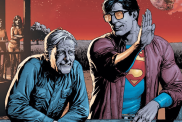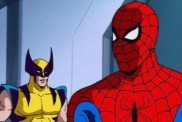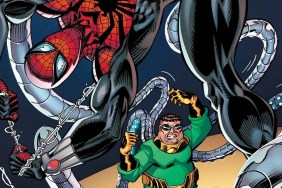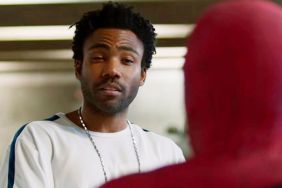Alias just released the following announcement about the software used for creating the Spider-Man 2 special effects:
TORONTO–Aug. 3, 2004– Alias® and Sony Pictures Imageworks announced today that Alias’ Maya® software was the core 3D special effects software utilized in realizing the advanced visual effects for the record breaking summer blockbuster, Spider-Man® 2. Not only does the film mark an achievement in terms of the quantity of visual effects shots – close to 600 computer generated (CG) shots were created using Maya – it sets new standards for computer-generated human characters. Maya’s 3D modeling and animation capabilities were key components in the creation of computer-generated versions of Spider-Man and the movie’s villain, Doc Ock. In addition to helping create and animate these characters, Maya was also used to generate much of the devastation left in the wake of Doc Ock as well as to model the faux-Manhattan through which Spider-Man swings in the film’s climax scene.
“We created effects in Spider-Man 2 which visually extend Sam Raimi’s presentation of his character’s conflicts,” says Scott Stokdyk, visual effects supervisor at Imageworks. “The integration of action with the actors’ performances has made for a compelling movie-going experience that has drawn in record numbers of viewers.”
“The team at Sony Pictures Imageworks set the standard for visual effects very high with the first Spider-Man film,” says Bob Bennett, general manager of product management at Alias. “Incredibly, the effects in Spider-Man 2 surpass those in the first film. We are pleased that our Maya technology has allowed Sony Pictures Imageworks to take computer-generated visual effects to new levels – particularly with regards to the creation of digital humans.”
“Maya allows us to do things on screen that even its makers never envisioned,” states Sony Pictures Imageworks CG supervisor, Peter Nofz. “It has all the major components – modeling, character animation, dynamics, cloth, a scripting language – that you need to do a project on this scale. And each component is very well integrated with the others – this is very important to the way we work.”
Incomparable Characters
While film-goers may not immediately realize it, many of the key action scenes in Spider-Man 2 involve the use of computer-generated stunt doubles. While CG humans have always been one of the “holy grails” of the 3D animation industry, matching a computer-generated character to a live-action actor is more difficult yet. In order to help make their characters more convincing, the team at Sony Pictures Imageworks “motion captured” the faces of their live actors – Tobey Maguire as Spider-Man and Alfred Molina as Doc Ock – and brought that information into Maya. After some adjustments, the data was then applied to the Maya-based character models.
Other Maya technologies that enabled Sony to make the digital doubles indistinguishable from their live counterparts include the Maya API (used by programmers to write new functionality) and the Maya Embedded scripting Language (MEL(TM)) – a key component of the facial muscle system, the animation of Doc Ock’s arms and the “hair” pipeline. “Our productions are very MEL-heavy,” explains Nofz. “This is one of the software’s great strengths.”
Matching the live actors’ costumes was also tricky business. “The Doc Ock costume,” says Nofz, “is the most difficult one we have ever had to build. It involves four layers worth of clothing: a girdle where his tentacles are attached; a western-style suede coat, another full-length leather coat and a cape, which he takes off from time to time. All of these layers are different fabrics that have to behave differently.”
At the time of production, the Maya Cloth(TM) module did not have all of the technology necessary to create this incredibly demanding costume. For this reason, Nofz’s team brought in the Alias Custom Development Center (CDC) to help.
Based in Southern California, the CDC consists of a group of highly-experienced Maya programmers, who were hired to create a new type of digital cloth that would not only allow Sony to create the Doc Ock costume, but animate it in challenging scenes such as the train fight scene. The results? “It looks good,” says Nofz. “Even on the train where Doc Ock and Spider-Man are going 60 mph.” This new cloth technology has since been incorporated into Maya.
Maya’s Dynamics Bring Manhattan-Shattering Results
Beyond characters, the Maya dynamics tools were used to create such effects as shattering glass and bits of flying debris. “In this second movie,” explains Nofz, “the villain was much more difficult to create, in the sense that when Doc Ock walks, everything needs to break and fall into pieces around him. Having Maya as the center of our pipeline for our characters, as well as these types of effects, simplified things for us. Whenever glass shatters and the pavement cracks and opens, whenever entire buildings crack up and break into pieces – that was all Maya.”
In addition to dynamic effects, Maya’s advanced modeling tools were used to make the visually stunning recreation of downtown Manhattan. “We had a couple blocks of Manhattan built in Maya from the first movie that we were able to re-use, plus we built another whole section for this movie,” states Nofz. “We like working at perfecting environments. Maya allowed us to improve the quality of the buildings – they look good in the first movie, but even better in the second.”
Next Up – Polar Express
Now that Spider-Man 2 is amazing audiences in theatres worldwide, the team at Sony Pictures Imageworks is on to its next big project. It is now using Maya to create animated characters and effects for the feature-length animated film, The Polar Express, due for release during the 2004 holiday season.
Source: Alias









